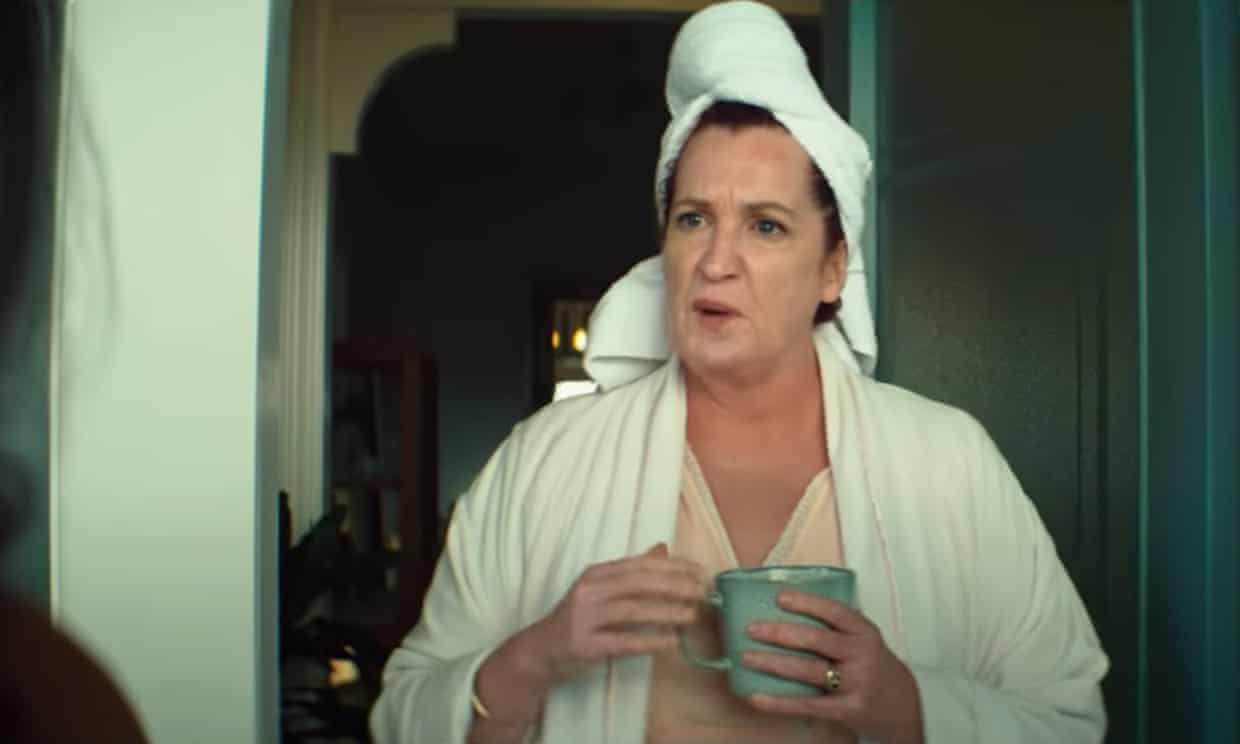
It was on the morning of 18 March, when Glastonbury was confirmed cancelled, that Sarah Gresty, BA course leader in fashion at Central Saint Martins (CSM), realised that the class of 2020 would be a graduating year unlike any other.
"That was when we thought: OK, this is only heading one way. After that, everything happened really fast. That evening many of the international students started getting sent home, and were literally grabbing their things from the studios and heading to the airport." Within days, all students were told that there would be no final show. "It was traumatic," says Gresty. "For many of them, that show is a moment they had been dreaming about since they were children." I have spent the last week talking to class of 2020 graduates from all over the country, and a word I have heard time and again is "heartbreaking". They made it all the way to the final year of fashion college, only to find themselves in the right place at the wrong time, with college paused before the show that was meant to launch them into the world. A final-year fashion show, after all, is a night like no other – think prom meets Absolutely Fabulous meets Frieze. But there are other words I have heard a lot, too. Change. Opportunity. Sustainability. Reset. "I am proud to be part of the first generation of post-pandemic graduates," CSM student Viktorija Kozorezova tells me from her bedroom, where she is producing the wearable sculptures she had been planning to produce in the college metal workshop, but out of DIY filling foam instead. Maisie Crome, from Kingston School of Art, has spotted craft and homemade projects "all over Instagram, the TV news, everywhere. I specialise in knitwear and I chime on about handmade, about UK-made, so I'm really excited to be part of that movement." "I know for a fact," says Hannah Eleri Russell of the University for the Creative Arts Epsom, "that this time has made me look at clothes in my wardrobe in a different way. Given the level of overproduction, I hope this is a chance to consider caring for our clothes better and to learn new ways to mend and make pieces." Facebook Twitter Pinterest Have we kicked our fashion habit?: customers wait ahead of the Balmain x H&M launch on Regent Street, London, November 2015. Photograph: Ray Tang/Rex/Shutterstock Fashion has been taken apart at the seams by the coronavirus crisis – and the class of 2020 could be the ones to redesign and remake it. Graduate-level jobs in the industry often mean a move to an atelier in Paris, Milan or New York. But the globalised supply chains on which mass fashion depends in order to serve customers with the speed and low prices they now expect have been severed, and a question mark hangs over whether they can ever be safely resurrected. Thousands of independent designer labels whose survival depends on the sale of clothes that have been sitting behind shuttered shop doors since March look set to go bust. The British Fashion Council has warned that without substantial support, half the country's industry could be wiped out. At a meta level, there is a sense of a spell having been broken. The carousel of seasonal fashion trends broke down just as the spring/summer ride was getting started, throwing everyone off, to stumble indoors to their homes and comfy clothes. There is no guarantee that consumers will automatically dance to the beat of trends again. Sale-of-the-century discounts are likely this summer as retailers rush to shift stock – but will anyone want an expensive keepsake of a season they spent indoors and anxious? How do we try on clothes safely? What happens to fashion week, now that squishing hundreds of people from all over the world on to packed benches so they can take pictures on their phones seems, well, loopy? And – biggest of all, this – how will this unexpected quarantine of shopping impact on consumer demand? Have we kicked our fashion habit? And what will that mean for a generation hoping to make a living creating clothes? We need to build a new fashion system that is ethical and equal, and empowers young people "Fashion will survive. Creativity will always find its way, I'm not worried about that," says Jefferson Hack, co-founder and CEO of Dazed Media. Fashion, after all, was one of the first industries to repurpose itself, with designers pivoting to the production of masks and gowns for frontline workers. "What I am concerned about is the bad deal that young people get in this country. Long before coronavirus, the younger generation were being hung out to dry economically and politically. The generation Dazed is for have inherited a messed-up environment and an insecure economy. We need to build a new fashion system that is ethical and equal, and empowers young people." Many students tell me of jobs that had been advertised disappearing from recruitment websites. Some who planned to begin postgraduate courses in the autumn have deferred, waiting to see how the chips fall, while others who hoped to find employment are opting for further study. Many are wrestling with emotional fallout alongside the logistical issues. "I always felt left out by traditional educational methods," says Thomas Robert, a fashion promotion student at Manchester Metropolitan University (MMU). "High school was tough and so was college. University has been the making of me as a person, and I feel deflated that I will not get to celebrate this amazing milestone in my life." Another MMU student, Deanna Barber, says: "I know this won't last for ever, but it feels like my goals have got much further away. A lot of uncertainty – about income, happiness, sense of achievement – has entered my life." That uncertainty is felt right up to the top of the fashion food chain. "I feel very strongly that when we come out at the other end, people's values are really going to have shifted," Anna Wintour said recently. "It is an opportunity for all of us to look at our industry… and really think about the waste and the amount of money and consumption and excess that we've all – and I obviously include myself in this – that we've all indulged in. We really need to rethink what this industry stands for." Fashion, after all, should be about change. "Positives can and will come out of this," says Emma Hope Allwood, head of fashion at Dazed Digital. "We have been given what we never had before: time and distance to work out what we want our industry to look like. This crisis has made the waste and the excess more visible." The ingenuity required to complete studies during lockdown has prompted students to think outside fashion's ribbon-tied box. One student, no longer able to source the buttons she wanted, went beachcombing for shells and used those instead. Another, who had planned to shoot her collection on a model friend in the city where she studied, found herself isolating in the country with her parents and had to switch to using her mother. Seeing the clothes on her mum unexpectedly made them look even stronger, she says. When fashion students and established designers are canvassed about the future of fashion, a remarkable consensus emerges: almost everyone wants to ditch overproduction and waste. But almost everyone wants to save the fashion show. I'll wait four years for Frank Ocean to make an album. I can wait more than three months for a brand to do a show Fashion has become bloated. Collections are too big and too frequent. "We have too much product," as Joseph Altuzarra put it bluntly to Vogue recently, and it is produced to a trend cycle that has become unintelligible. Coats now have to go on sale in July to shift them before the sundresses hit the shop floor in November. The internal workings of a schedule yoked to outmoded department-store logic has come unmoored from common sense. Giorgio Armani has announced that his next haute couture collection will be seasonless, with pieces for all climates, and denounced the churn of high-speed fashion as "criminal" and "absurd". Designers Dries Van Noten and Marine Serre, and retailers Selfridges in the UK and Lane Crawford in Hong Kong and mainland China, are among the signatories of an open letter proposing a "reset" to the seasons. They want collections to be on sale for longer, with less emphasis on the "extra" seasons of resort and high summer. The late Azzedine Alaïa, who refused to conform to Paris fashion week schedules and showed his collections as and when he felt they were ready and appropriate, is being hailed as ahead of his time. "I'll wait four years for Frank Ocean to make an album," notes Dazed Digital's Hope Allwood. "I can wait more than three months for a brand to do a show." But the fashion show – for all its bad press as a gaudy totem of excess – still has a magic, one many designers want to rediscover in a new, more modern form. For the rest of 2020 at least, social distancing seems set to put paid to fashion weeks as we have known them. "It's pretty clear that if the September shows do happen – and that's a very big if at this point – they will be completely different," says Imran Amed, founder and CEO of the Business of Fashion. "I look back to the shows in February, where we were all squeezed in like sardines, and that seems like another world. I don't think fashion week will look the same this year – and then the question is, does that change become permanent?" The fashion show at its best can be an electric collective experience, immersive theatre at its best. But in the last decade, Hollywood-scale set-building and guests flown in from all over the world have contributed to a spectacle of excess, pickled in champagne and reeking of carbon. There is a strong desire to bring back the magic, without the circus. For many labels, cost-cutting will be an economic necessity – and even for the luxury houses best placed to ride this out, there is the matter of tone. "The narrative of fashion as a symbol of excess isn't always warranted," says Hope Allwood, "but in a post-pandemic world brands will not want to be seen to embody it." This vintage of graduates are firmly generation Z, the first to have grown up fully digital native. They are perfectly poised to do what fashion designers have been attempting to do, but not quite pulling off, for the past two decades, and reinvent the fashion show as a digital-first event. "Until now, digital has always been peripheral to fashion week," says Amed. "Digital has meant a show produced for a live audience and then broadcast. Or an Instagrammable moment – but that depends on a live audience who are there Instagramming it. This could be the moment when fashion week becomes, by necessity, created primarily for digital consumption." Why stop at Instagram and YouTube: Fashion Week x Netflix, anyone? Big brands need to work with young trailblazers, who know how to be engaging and fun The crisis has, Amed points out, broken down outmoded fashion snobberies toward digital. With conferences and shows cancelled, many of the grandest names have found their way on to less polished forms of communication. Marc Jacobs loves a Zoom chat; Olivier Rousteing, creative director of Balmain, is on TikTok. "There is an opportunity for young people here, because there are still so many brands who really have no idea when it comes to digital content. Now is the time for them to be working with the young trailblazers who understand how to create work that is fun and engaging. This is going to be a more marketable skill than ever before," says Amed. Many of this year's graduates are ahead of this curve. Earlier this year, long before the logistical impact of the pandemic was being felt, Heriot-Watt University in Scotland had already decided to replace the traditional fashion show with a new, more sustainable format showing final work digitally through video, film and photography. At CSM, five of this year's 109 graduates had opted for entirely virtual final collections before the crisis began to unfold. Scarlett Yang, a student who has been collaborating with brands on 3D animations and virtual reality showcases, tells me she now "has more offers of work than I had before". Jessica Gray, 23, a matchesfashion.com scholar at CSM, says her final collection "represents the overwhelming effect of the screen interfering in our lives. If that wasn't a premonition, I don't know what is!" The crisis has accelerated a shift towards a more waste-conscious mindset. One student who had had his heart set on a beautiful silk that ended up shuttered in a locked-down Italian factory has made his final collection using a bedsheet donated by his parents instead. Another, with bracing can-do spirit, is embroidering on to loo roll. And while some internships in Paris and Milan have been cancelled, others are happening online. The savings on travel and accommodation not only make for a smaller carbon footprint, but opportunities that are more accessible to students with less financial support, as Gresty points out. The coming generation have the opportunity to make sustainability a core value. "Young people will emerge from this period wanting to buy for the future, to buy secondhand – just to make better choices, even if that's buying something on Depop knowing you can flip it again later," says Hope Allwood. "If your business doesn't care about leaving the world in a better shape through your practice, you will make yourself irrelevant." Facebook Twitter Pinterest Nigerian influencer Angel Obasi wearing a face mask in Lagos, Nigeria May 2020. Photograph: Temilade Adelaja/Reuters Today's 20-year-olds, who have grown up with the climate emergency at the centre of their world view, see environmental impact as an essential part of thinking about fashion, rather than a notion at loggerheads with it. "I think the entire seasonal cycle should adapt itself to the climate crisis," says Saskia Purr, a student at Nottingham Trent University. "Climate change is making our winters warmer and our summers longer." It is becoming fashionable, in industry circles, to propose that the way forward for fashion is to turn the clock back. "You know what fashion should have done? We should have stuck to our guns," says Bebe Moratti, founder of the Italian ethical luxury brand Redemption. The fashion system, he says, should step away from the mass-consumption gravy train. "People say you can't go back to the old ways, but that's exactly what the brands that have survived the longest have done. Look at Hermès. That is what the dynamic of fashion should be – an investment in something that's beautifully made, something that you love, a transaction that supports the person that made it. So, is my business model crazy, to go back to a place where we cherish what we buy, where we cherish the workers, where we cherish the environment? No. It's not crazy at all. It works." "This crisis has made the nation less materialistic," says Bournemouth student Ffion McCormick-Edwards. "We have stayed connected by talking about what we are looking forward to: things like a family barbecue, or a party with friends, or seeing our grandparents." Despite the blow of missing out on graduation, "I wouldn't say this term has been all loss," says fashion knitwear student Rhiannon Davies. "My collection has become a lot more authentic to me, because doing it at home has cut off the many voices that I would find distracting at university. Facing myself – and my own company – is something I don't usually do a lot of. I almost feel I've found myself in the process." Still, the class of 2020 has been dealt a harsh blow. "I think the biggest loss is not the show itself, but the camaraderie around it," says Gresty. "The last seven weeks before a show is sheer hard work, tears, panic, but also this amazing energy, supporting each other through the fatigue – and then coming together in celebration. Not having that is tough." Despite the hardships of this term, she sees a bright future. "Students keep saying to me, 'We're so unlucky to be in this year – why us?' and I say, 'Are you joking? You are lucky. This is such a special year. This is the year that everyone will remember for ever.'" Topics Fashion Class of 2020: a Weekend magazine graduate special Graduation Anna Wintour Dries Van Noten Instagram YouTube Zoom features Share on Facebook Share on Twitter Share via Email Share on LinkedIn Share on Pinterest Share on WhatsApp Share on Messenger Reuse this content








